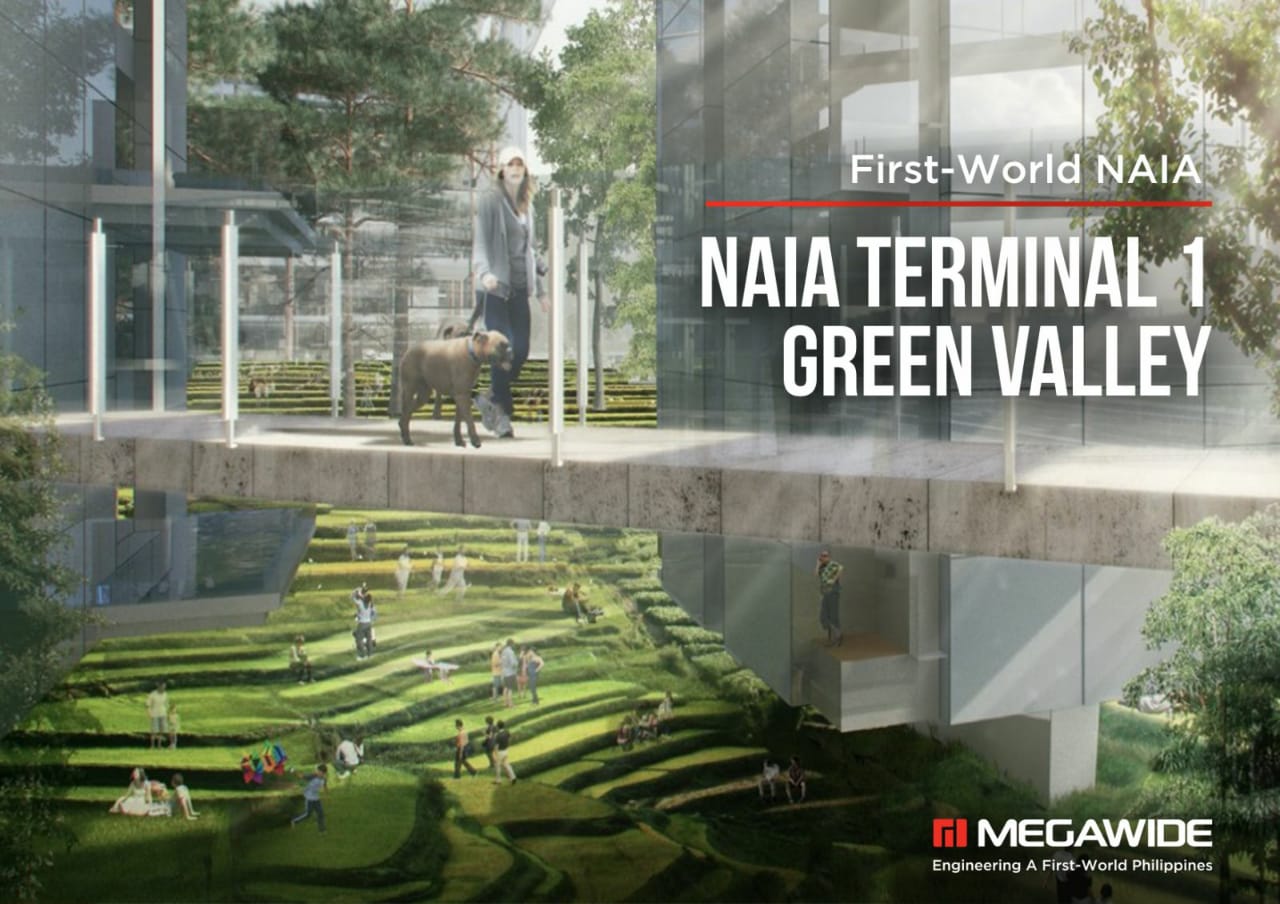Megawide Construction Corporation (MEGAWIDE) is proposing a PHP109B rehabilitation and transformation of the country’s busiest and most congested airport complex — the Ninoy Aquino International Airport (NAIA). The leading Filipino infrastructure and engineering innovation company promises travelers flying in and out of the Philippines’ premier gateway to experience a dramatic improvement in terms of comfort, efficiency, and safety in the first year alone of the proposed project.
“As the only tried and tested company to deliver the first-world airport for Filipinos in decades – the internationally awarded Mactan-Cebu International Airport (MCIA) – we are thrilled to announce that passengers flying in and out of the NAIA complex will enjoy a vastly improved experience within the first year of the management of our proposed NAIA transformation project,” according to Edgar B. Saavedra, Megawide Chairman and CEO.
GMR, which has a 40% equity participation in the project, is among the world’s top four airport operators, managing over 100 million passengers annually and connected 267 global cities pre-pandemic. In September 2020, Groupe ADP (Aeroports de Paris) which manages the Parisian international airports Charles du Galle, Orly, and Le Bourget Airport, acquired 49% of GMR.
“Working closely with all NAIA stakeholders, within months of our being awarded the project, the Filipino public will experience reduced queuing times and shortened delays at all terminals, clean and improved restrooms, expanded shopping and dining, plus enhanced and smoother security, baggage handling and more,” explained Louie B. Ferrer, President of GMCAC, the joint-venture company of Megawide and GMR Airports Limited (GMR) which developed and operates the only current world-class standard international airport in the Philippines, MCIA.
Uplifting the NAIA Experience
MEGAWIDE GMR’s proposal will increase the NAIA’s current capacity of 30 million to 65 million passengers per annum over a strategic and phased approach.
Terminals 1-3 will see massive improvements, particularly in the first phases of the concession, that will allow passengers to have efficient use of facilities, faster transactions, and enjoy their stay in the terminals with better dining and retail experience.
NAIA Terminal 1 Transformation
The forty-year-old Terminal 1 (T1) will be rehabilitated and expanded, bringing it into the 21st century. While the existing structure, designed by National Artist Leandro Locsin, will be retained and enhanced, the open parking area and back parking building will be redesigned and integrated into the T1 complex. The centerpiece is envisioned to be a fully sustainable micro-climate “Green Valley” inspired by the Banaue Rice Terraces, one of the Philippines’ most distinctive and unforgettable natural wonders. T1 check-in areas will also be reconfigured.
NAIA Terminals 2 & 3 Transformation
At Terminal 2, reconfiguration of check-in, expansion of dining and retail areas, and improvements in the baggage handling system will be made. Canopies will be installed in the parking facility open areas to allow people to move seamlessly; and the drainage system will be fixed to prevent flooding. At Terminal 3, new pedestrian canopies will also be installed, while enhanced security areas and bathroom renovations will be prioritized.
Airside, MEGAWIDE GMR will construct an additional taxiway and include runway holding areas to allow planes to queue and depart at the soonest time that the runway is available, thus making air traffic significantly manageable.
In the coming years, Phases 2 & 3 will be dedicated to relocation and replication of existing facilities, developing a brand new international terminal, enhancing all parking, and the introduction of a railway-based people-mover system, akin to other major global airports.
A First-World NAIA
If there is any indication of the NAIA project’s viability, then MEGAWIDE GMR’s past performance guarantees future results. In 2018, MEGAWIDE GMR commissioned the MCIA Terminal 2, and the year after completed full renovations of its Terminal 1 while ensuring uninterrupted operations and seamless passenger experience.
The MCIA was awarded the Asia-Pacific Medium Airport of the Year in the CAPA 2018 Asia Aviation Awards for Excellence, and won at the World Architecture Festival in the Completed Buildings – Transport category, besting Singapore Jewel Changi Airport and Hong Kong West Kowloon Station, among others.
MCIA also showcases locally sourced materials, aligned with Megawide’s DNA to help uplift local entrepreneurs and workers. In addition, it is recognized for its innovations and technological advancements that paved the way for efficient traveling.
In September 2020, Megawide also delivered the new, architecturally distinctive Clark International Airport terminal building capable of serving up to 12 million passengers a year, within budget and on time to the Department of Transportation and the airport proponents.
Worker Protections & Inclusive Stakeholder Engagement
At MCIA, MEGAWIDE GMR worked closely with regulators, airlines, concessionaire-holders, and all internal and external airport stakeholders. No jobs were lost at MCIA; in fact, many employees across MCIA were upskilled with new management, technology, and other skills required to run the first-world airport.
Ferrer emphasized that NAIA employees who will be offered jobs with Megawide will receive benefits equal to or possibly more than what they are currently receiving, and will be protected against any labor-saving devices for a certain period.
Significantly, the MCIA has spurred economic growth in Cebu as tourism is one of its economic pillars. The modernization of MCIA has been pivotal in advancing Cebu’s tourism image as tourist arrivals increased in 2019 before the pandemic hit the Philippines.


